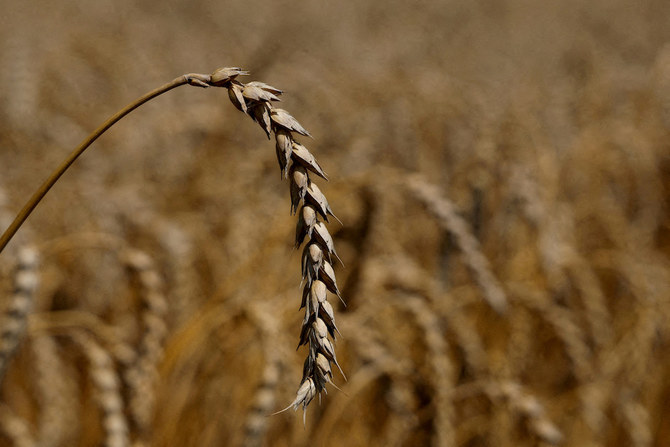LONDON: The Black Sea Grain Initiative has seen nearly 3 million tons of grain shipped from Ukraine to the rest of the world since August.
A UN press conference in New York heard that the pact, formally the Initiative on the Safe Transportation of Grain and Foodstuffs from Ukrainian ports, had made significant progress in starting to alleviate global prices, getting much-needed supplies to developing countries.
However, work is still to be done on securing exports for fertilizers from Russia and passing on price reductions to consumers, especially in poorer countries.
Amir Abdulla, the UN coordinator for the initiative, said vessels were successfully completing journeys to and from the region within seven-day windows set out in the July 22 agreement between Russia, Ukraine and Turkey.
“We’ve had 129 successful voyages out of Ukraine, fully laden, that’s taken us up to nearly 3 million tons,” he said.
“It took us nearly … four weeks until we got to the first million, but then the second million was about eight days later, the third million about the same.
“We’d really like to see a slight increase on that … but if we hold at those levels, we’re more or less in line with what this part of all the agreements had sought and thought.”
He added: “The initiative was initially signed for 120 days. We know that will come around very fast. Getting it extended is something that will be on our mind.
“We’ve got very positive messages from Turkey that they fully support this … We’re hoping with their influence, with the UN mediation efforts, that it won’t be a matter for discussion.
“We’ll certainly put in the effort to get as much (grain) as we can through within those 120 days.”
Before the Russia-Ukraine conflict that began in February, Ukraine was one of the world’s biggest exporters of grain and fertilizers, with a significant part of its supplies going to the food-insecure Middle East and North Africa.
Its supplies were especially important to countries such as Egypt and Lebanon, the latter of which was left in an even more precarious position following the destruction of much of the country’s grain storage capacity in the 2020 Beirut port explosion.
Ukraine also supplied nearly 40 percent of all grain bought by the World Food Program.
Rebeca Grynspan, secretary-general of the UN Conference on Trade and Deevelopment, and coordinator for the task team of the Global Crisis Response Group on Food, Energy and Finance, said the impact of the Black Sea Grain Initiative was already being felt.
“First, we needed to stabilize the grain markets and fertilizer markets in the world, and for that, the agreements were essential to be able to make food affordable for millions of people in the world.
“August was the fifth month in a row that (grain) prices have been coming down. This helps to ease the pain … for 1.6 billion people in the world that have been faced with a cost of living crisis, especially because of the increase in food prices,” she said.
“Second, obviously, there was the humanitarian part, with the WFP — Ukraine is one of the main suppliers to the WFP — and also price issues for the WFP. Higher prices meant the WFP was able to buy (less) grain.
“To reintegrate food and fertilizers to global markets, lowering global food prices so vulnerable people everywhere could access affordable food was our main objective.”
Abdulla said the initiative had already decreased the cost of shipping purely by reducing insurance costs for operators.
He rejected suggestions that the proportion of grain shipped to lower-income countries, 28 percent of the total, was lower than normal, saying: “The shipments that are coming through those routes are very much in line with what would commercially be shipped anyway.”
However, Grynspan warned that it would be some time before the benefits being reaped by the initiative would be felt in poorer countries.
“Prices at the international level have gone down. But it’s true that prices at the domestic level haven’t seen the decrease that we’ve seen at the international level,” she said.
“So doing this isn’t enough. The problem for many developing countries is still a problem because domestic prices aren’t going down enough. There’s much more to be done.”
Grynspan said work was continuing to ensure the export of sufficient fertilizer from Russia to the rest of the world to avoid further food crises.
“The UN is pursuing all efforts to allow for a positive outcome on Russian ammonia exports to international markets,” she added.
“We’re going into the sowing season in the Northern Hemisphere. If we can’t solve this problem, that’s an urgent problem that will affect and bring food prices (up) in the future, (and) we’ll be in a dire moment.”


























